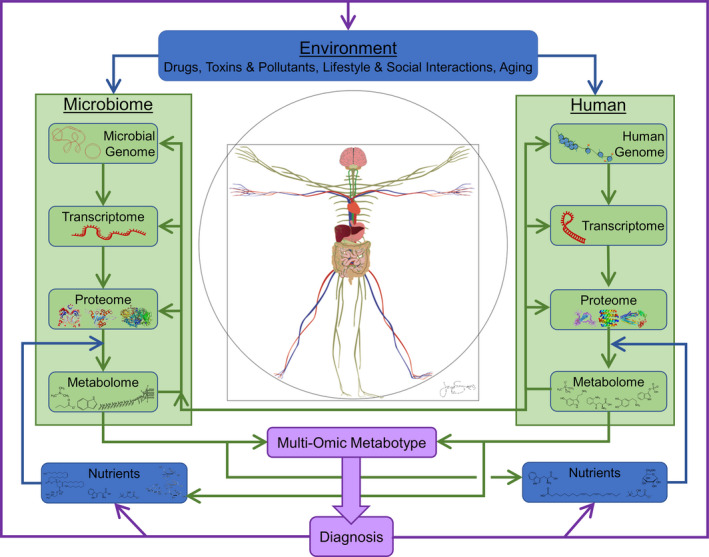Figure 1.

The Vitruvian human, with separate interacting central dogmas for the microbiome and human. The metabolites of one can serve as nutrients and signaling modulators for the other. The inputs to the system are external nutrients for both the human and the microbiome, and a variety of environmental factors, including drugs and toxins. The information gleaned from the combined metabolomes constitutes a metabotype that can provide diagnostic information, which then can be used to adjust the inputs to the system. Proteins shown for the microbiome are, left to right, the EcoRV restriction endonuclease and the flavin nitroreductase protein from Escherichia coli, and the enzyme beta‐gal. The microbiome nutrients are phosphatidylcholine (produces trimethylamine (TMA)), tryptophan, carnitine (produces TMA), and inulin. The microbiome metabolites are trimethylamine, butyrate, the tryptophan derivative indole, and a lipopolysaccharide. The human proteins are tau protein, the dopamine receptor DRD2, and p‐glycoprotein. The human nutrients are tryptophan, alpha‐linolenic acid, carnitine, and glucose (α‐D‐Glucopyranose). The human metabolites are trimethylamine N‐oxide, serotonin, kynurenine, dopamine, and indoxyl sulfate. (Inspired by R. Kaddurah‐Daouk's group 18 ).
